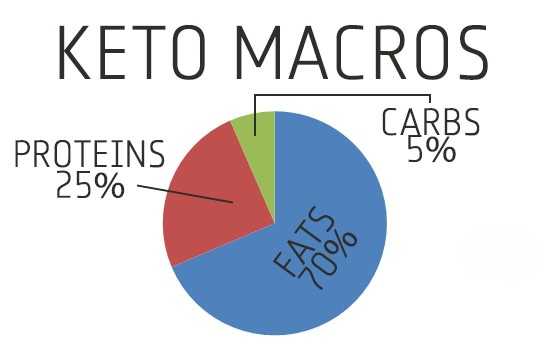Calculate Keto Macros: How Many Carbs For Keto Is Advisable For Good Health

Keto Diet pills are designed to supplement the effects of a keto diet and are known to provide users with quick, effective results.
If you don’t feel like using carbs, another option that is readily available is the Keto diet since it will allow your body to burn fats instead of carbs to produce energy.
Most people find this diet to be restrictive and difficult to adhere to, despite the fact that carbs are a staple of nearly every diet on the planet.
A low-carb diet high in protein and fat can be taxing on your body, causing keto flu, dehydration, and leg cramps.
Basically, when we eat a lot of carbohydrates, the majority of them are converted into glucose, which our bodies use for energy.

Normally, the excess glucose is usually stored as glycogen and fat. While the cells in our body can use fat for energy instead of glucose.
What are Keto Macros?
A keto calculator calculates your individual keto macro ratios for your keto diet, but what exactly are keto macros? The term "Macros" is a short abbreviation for macronutrients. The macronutrients are "big" nutrients that provide us with the expected energy.
The three main macronutrients found in our food today include fat, protein, and carbohydrates. Micronutrients, primarily vitamins, and minerals are equally important but must be consumed in much smaller or "micro" amounts.
The Best Keto Foods to Eat
You may want to find out the best Keto food that you can eat? There are so many ketogenic diet foods to eat. But the best should be low in carbs and high in nutrition. This will allow you to stick to your keto-carb goals while also supporting overall good health.
The following are some of the best keto-approved food lists:
Top Healthy Keto Fats List
You can find fat in whole foods or from extraction, such as oil and butter. Fat is also found in animals and plants. Most animal fats contain saturated fat which is less desirable because it has the potential of causing high blood cholesterol levels.
This is why the best keto fats that you should focus on are unsaturated fats that benefit heart health, brain health, and mood.
Other plant-based foods and some high-fat fish, seafood, and whole eggs are some of the best sources of healthy fats that you can consume.
Here's your list of the best plant-based sources of fat for keto:
- Nuts
- Seeds
- Nut butter
- Tahini
- Avocado
- Olives
- Cacao and unsweetened dark chocolate
- Coconut oil
- Olive oil
What is a Low-carb Diet Plan?
Low-carb diets always contain high fat, moderate protein, and low carbohydrates.
It puts an end to the rollercoaster ride of blood sugar spikes and crashes, allowing the body to burn fat.
Macros for a Ketogenic Diet
Carbohydrates, protein, and fat are examples of "Macros" or macronutrients in food.
The typical macro ratio for keto looks like the following:
- 5% of calories coming from carbs
- 25% of calories coming from protein
- 70% of calories coming from fat
This macronutrient range is designed to induce ketosis and trick your body into burning fat for energy rather than sugar.
Best Free Low Carb & Keto Macro Calculator
The low carb & keto macro calculator will assist you in determining how much of each macronutrient to consume in order to meet your objectives.
This macro calculator is unique in that it can be used for both low carb and a keto diet.
Along with entering your information, you can choose the type of diet you want to follow and even customize it to meet your specific needs.
How to Count Macros on Keto
You need to have full control over carbohydrates if you must follow a ketogenic diet. If you're unfamiliar with the concept of counting macros, this can be difficult.
With practice and nutrition knowledge, you'll have the skills of counting macros under your belt.
When you understand the number of macros that you need, the next step is to choose your food portions accordingly.
This simple step can be carried out by utilizing the following:
- Having a complete keto food list
- Obtain a macro meal planner and portioning guide
After that, it is a matter of constructing your ultimate keto meal prep menu. You can also approach this from the other side by tracking your macronutrients in a keto-friendly nutrition app.
Using the app makes the process a straightforward one. Since all you are expected to do is keep a food diary and then try to stay within your daily ranges.
Download this free keto meal prep guide, which includes approved food lists and meal planning templates.
How to calculate macros for keto
Many keto macro calculators only use a suggested macro percentage and do not take into account your specific fitness and nutrition requirements.
Our keto calculator employs a proprietary formula that takes into account your age, weight, height, gender, and workout routine to provide you with the most accurate keto macro recommendations.
To start your keto calculation, you need to find your total daily energy expenditure (TDEE), this is usually your daily calorie requirement.
With TDEE, you can now calculate your individual macros, this will reveal how much protein, fat, and carbs you require to succeed on a ketogenic diet.
Each macronutrient has a different set of health benefits as well as a different number of calories per gram.
Protein = 4 calories per gram
Carbohydrates = 4 calories per gram
Fat = 9 calories per gram
Please note that your protein requirements are directly related to lean mass and fitness goals. This means, the more muscle you have, the more protein you require to maintain it.
In addition, when you increase protein consumption, you will end up promoting fat loss as well as muscle gain in novel ways.
Your carbohydrate requirements are determined by how active you are, and your fat intake is determined by your total energy requirements.
Author Bio
The author is currently blog-walking, reading, researching, and writing about the most pressing global concerns. She is also quite interested in reviewing a variety of tips and tricks in a variety of industries.
The author's main aim is that the entire post will be extremely useful and valuable to the readers, as well as providing a solution to some key consumer issues.
Article Comments
No Comments!
At present there are zero comments on this article.
Why not be the first to make a comment?
Similar Articles
Sponsor
Search Articles
Experts Column
Latest Articles
Featured Articles
Most Popular Articles












